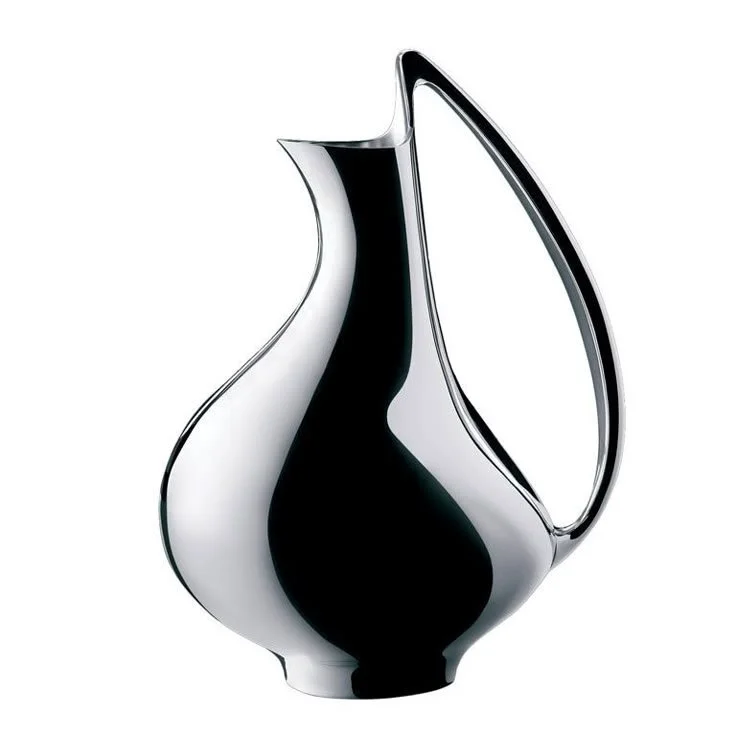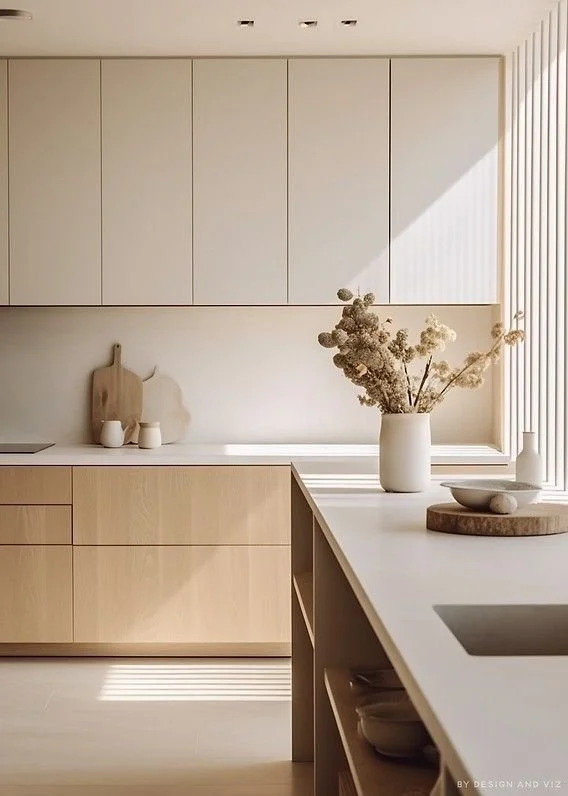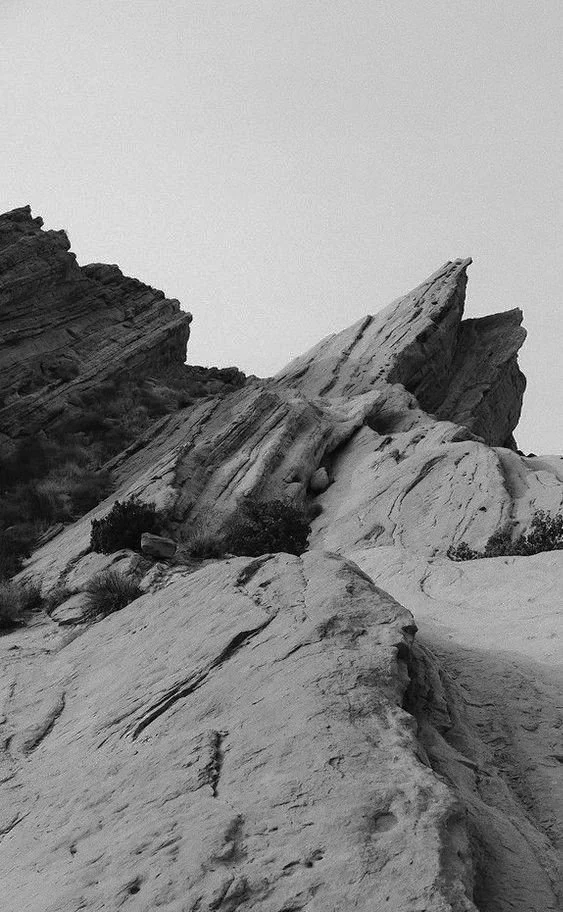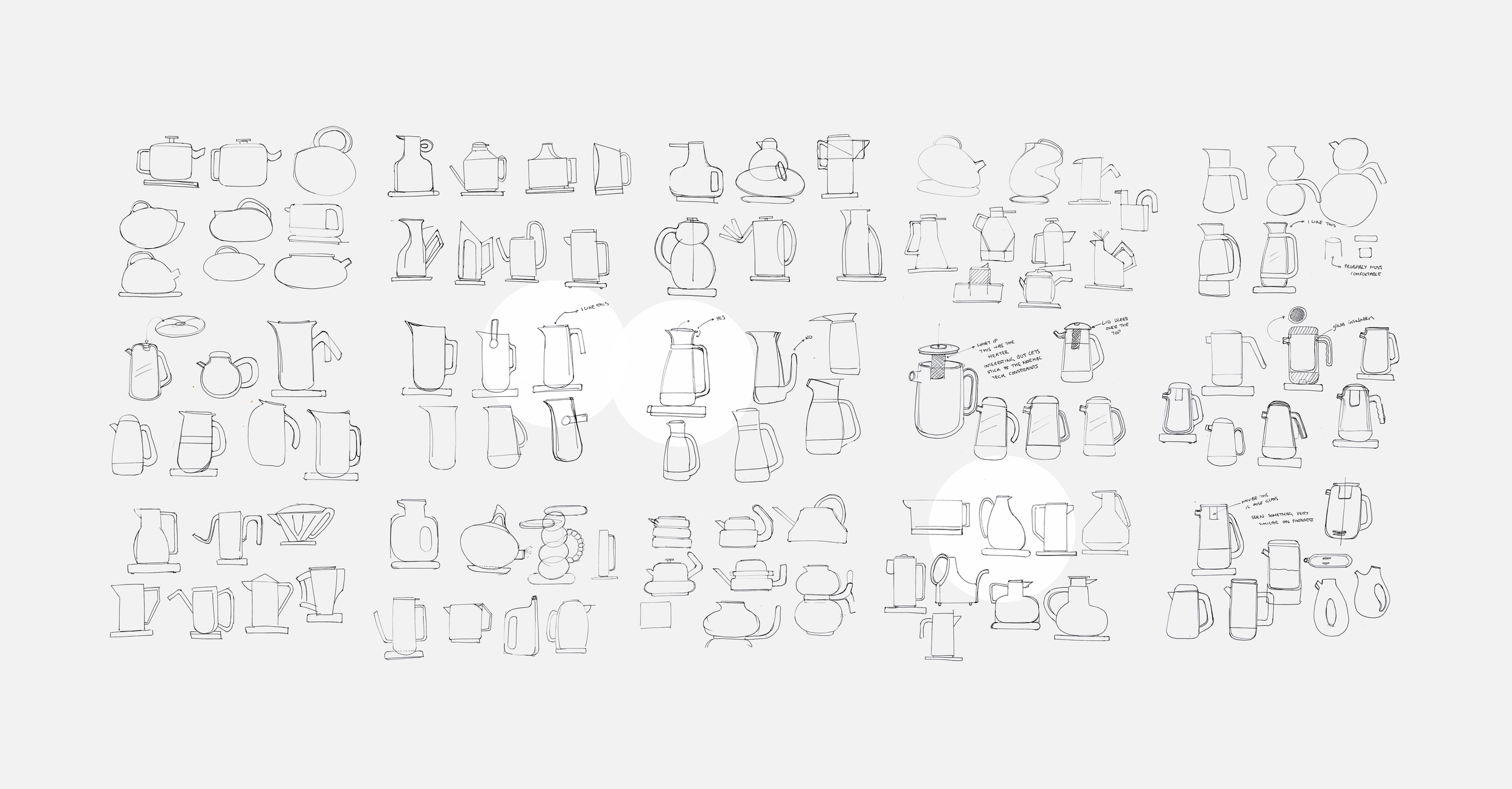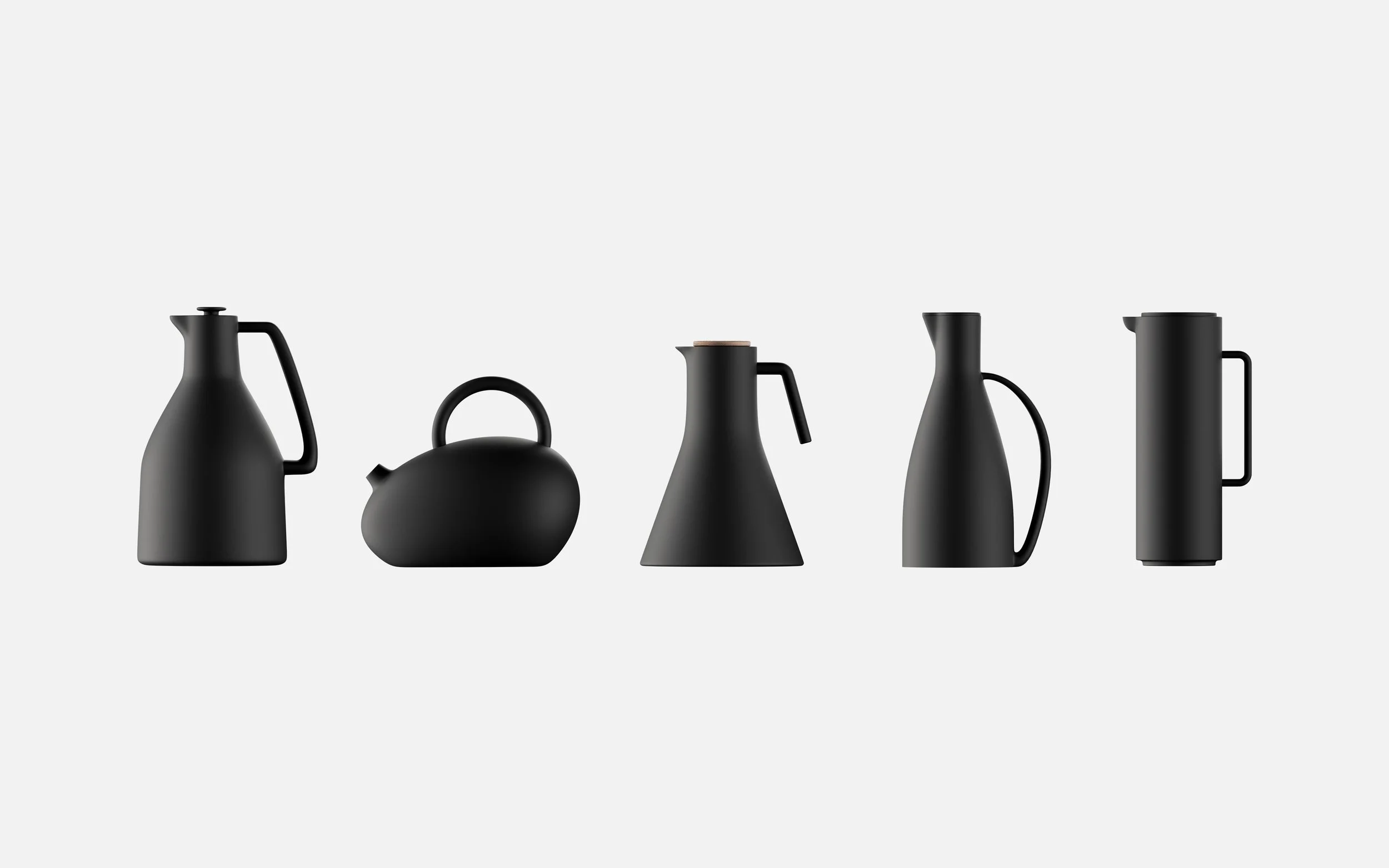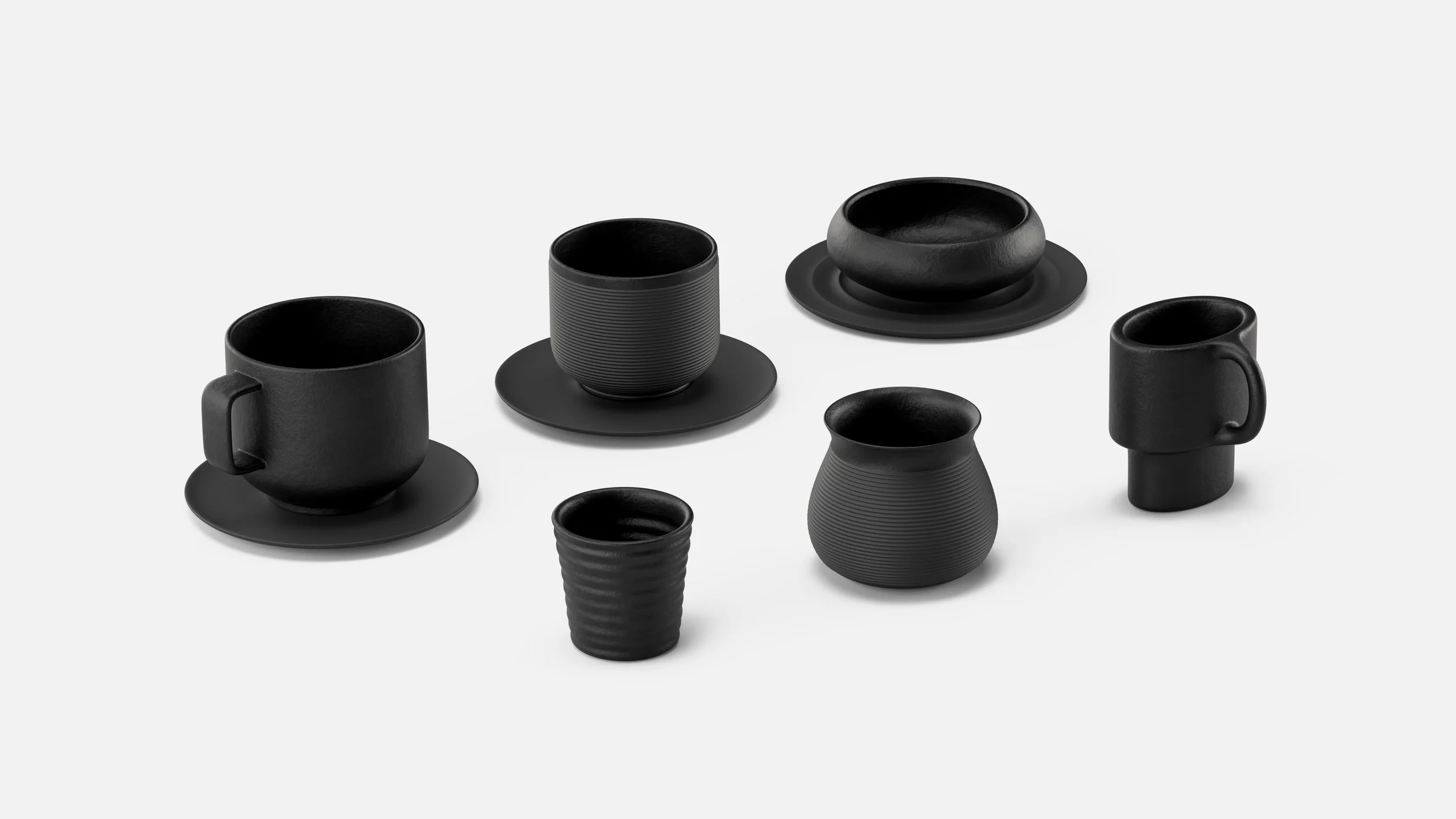Tetsu
Beauty is a core value in everything I design. As designers, we have the ability and responsibility to transform everyday objects into lasting works of art. When I looked at the current market for kettles, I was struck by how utilitarian and soulless many of them felt. Tetsu is my response: a kettle that elevates the everyday, rooted in material honesty and Japanese craftmanship.
Client: Personal Project
Software: Blender, Figma, Photoshop
Timeline: January - March 2025
Design Process
[ 1 ] Primary Inspiration
Key Themes: Japanese Tetsubin Tea Pots, Cast Iron, Hinoki Wood Interiors, Pampas Grass, Curvilinear Forms, Sculpture, Ritual, Coarse Texture, Black
Inspired by Japan: During the research phase, I was very inspired by traditional Japanese Tetsubin tea pots. I loved the materiality of cast iron and how each tea pot had its own unique pattern. I was also drawn to the curvilinear shapes of pitchers and felt that cast iron was be a suitable process for achieving such a curved surface.
[ 2 ] Initial Exploration
Exploring Ideas: I treated this task as a 2D exercise in the beginning stages. The majority of these sketches are from a side profile, which was deliberate, as I felt this was the most important angle of the kettle to get right, in term of aesthetics, because it’s the angle most people rest their kettle in their kitchen. The process I used to generate these sketches was simply to draw as many different shapes as I could think of without looking at any reference imagery. During my sketching sessions, I became really interested in this idea of a sharp transition of surface between the pouring session and the lid of the kettle.
[ 3 ] 3D Exploration
Personal Reflection: I then translated elements of what I liked from the sketches into 5 concepts. In almost all of the concepts there is a theme of a beak shape for the area where the water pours our, followed by a sharp surface transition to a flat surface for the lid of the kettle. I felt there was something interesting about that. However, I felt that the shapes I created were too safe, I wanted the next set of designs to have a bolder curvature.
[ 4 ] 3D Development
Refining Small Details: During this stage of the project, I learned a lot about 3D modelling. Getting lots of small details right is vitally important. There were many iterations that I wasn’t able to capture but they were all about making small tweaks, so small that it would probably be hard to see unless you zoomed in! I spent a lot of time refining the curvature of the belly, the transition points between the base and the handle and the placement and proportions of the lid in relation to the base.
[ 5 ] Tea Cup Exploration
The Ritual of Boiling Water: Given that a lot of this project was inspired by Japanese design and culture it felt right to design a tea cup to compliment the kettle. I explored six different designs and loved all of them. There’s a recurring theme of ripples, which is a pattern found in many Tetsubin tea pots and so I wanted to reference them in these cups.
Manufacturing
[ 1 ] Exploded View
[ 2 ] 3D Printed Sand Cores
[ 3 ] Sand Casting
Final Design





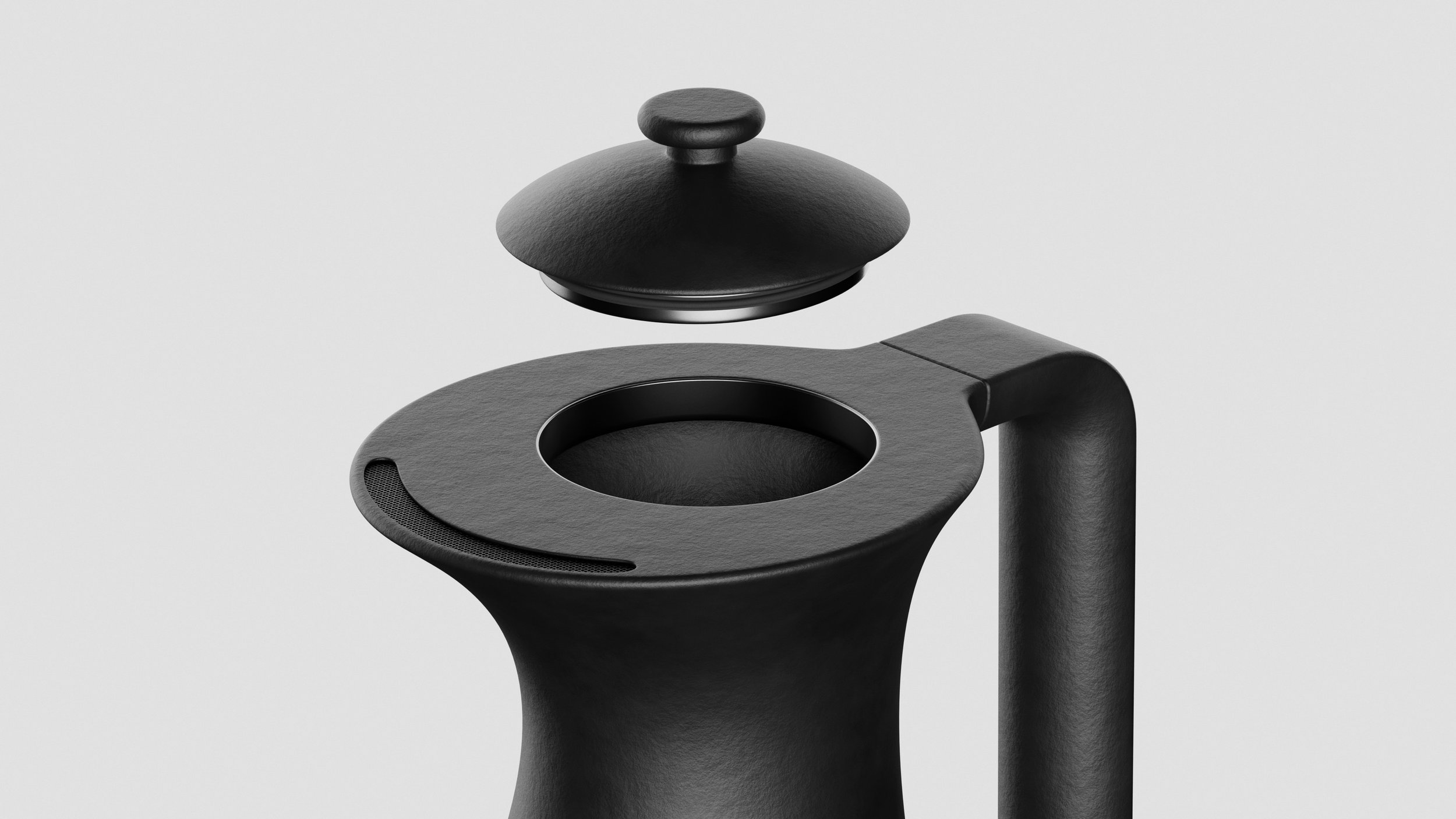






Next Project

